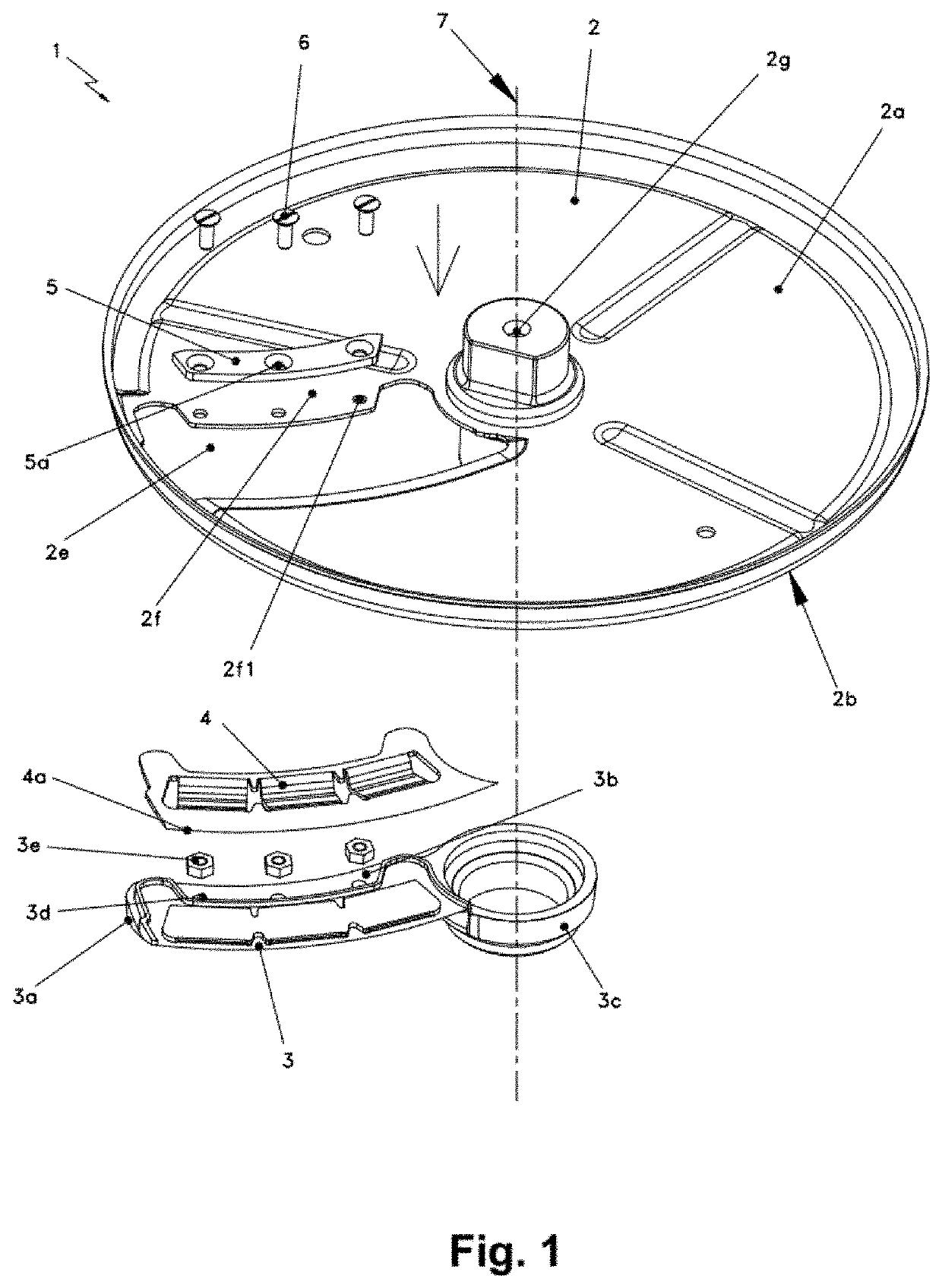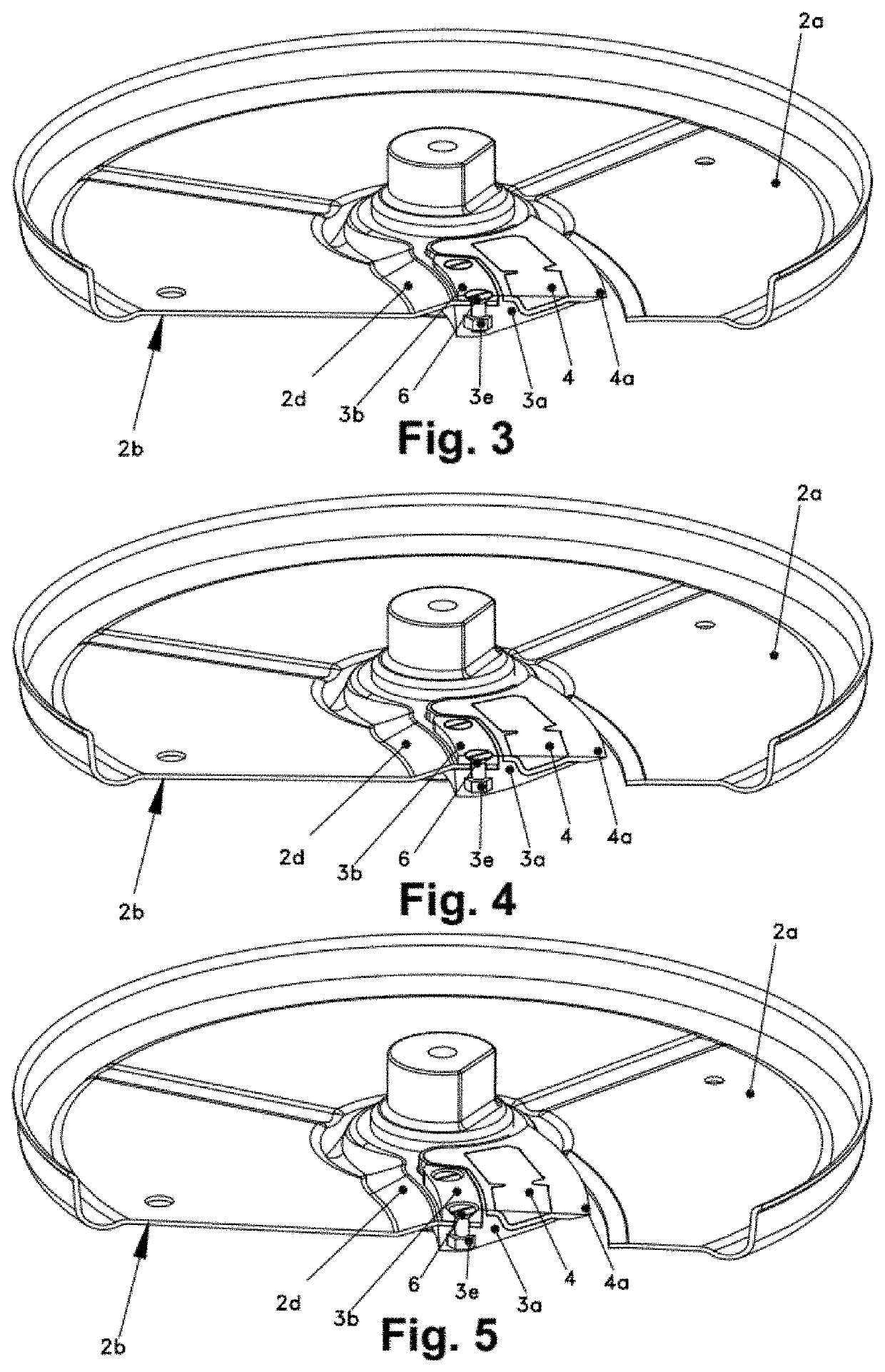Detachable cutting assembly
a cutting assembly and detachable technology, applied in the direction of metal working equipment, etc., can solve the problems of reducing cutting time and cutting efficiency loss
- Summary
- Abstract
- Description
- Claims
- Application Information
AI Technical Summary
Benefits of technology
Problems solved by technology
Method used
Image
Examples
Embodiment Construction
[0044]With regard to the above-listed drawings and references, a preferred mode of execution of the object of the invention is illustrated in the attached drawings referring to an improved removable cutting assembly (1) used in food cutting machines that consists of a rotating disc (2) with a window (2e) and a pivot hole (2g) linked to the rotation axis of the cutting machine (7), to which a flap (3) connected radially to the rotation axis of the cutting machine (7) by means of its insert ring (3c) in which the flap (3) consists of; a fixing area (3b) in which at least one nut (3e) is embedded and on which there is at least one fastening hole (3d) coinciding with at least one nut (3e), and a lifting wedge (3a) on which a blade (4) is partially embedded, leaving the cutting edge (4a) of the blade (4) protruding on the upper face (2a) of the rotating disc (2) through the window (2e) of the rotating disc (2), and the fixing area (3b) of the flap (3) being below the fixing area (2f) of ...
PUM
 Login to View More
Login to View More Abstract
Description
Claims
Application Information
 Login to View More
Login to View More - R&D
- Intellectual Property
- Life Sciences
- Materials
- Tech Scout
- Unparalleled Data Quality
- Higher Quality Content
- 60% Fewer Hallucinations
Browse by: Latest US Patents, China's latest patents, Technical Efficacy Thesaurus, Application Domain, Technology Topic, Popular Technical Reports.
© 2025 PatSnap. All rights reserved.Legal|Privacy policy|Modern Slavery Act Transparency Statement|Sitemap|About US| Contact US: help@patsnap.com



